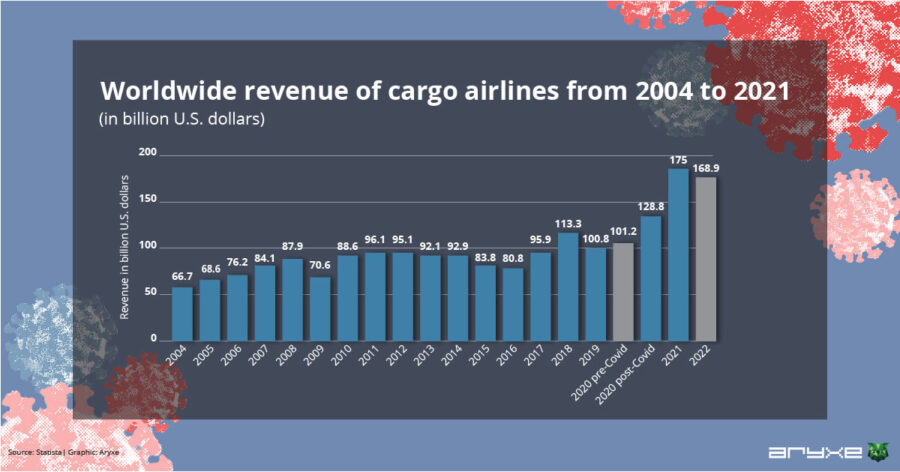COVID19: Air Travel and its recovery from Covid-19
9 min read

9 min read

The new decade began with numerous countries closing down their borders in response to the outbreak of the Covid-19 virus. The pandemic, which has been with us for almost 2 years now, introduced multiple restrictions and regulations that limited the free movement of individuals in an attempt to curb the spread of the virus.
The world has changed since then, drastically. Depending on where you live, things may be slightly different but to break things down, we now don’t panic if we don’t feel our phones in our pocket but we do that if we don’t have a facemask with us. Hearing someone sneeze in your vicinity triggers a fight or flight kind of attitude, and we have all experienced the doomsday grocery shopping style at some point. Last but certainly not least, before packing your bags and leaving for a fun travel adventure, you now have to check whether you are allowed to enter the country, what rules and restrictions they have in place, and make sure to have a getaway plan, just in case they decide to shut the country down with no notice. The last two years were the years where you no longer have to make regular small talk about the weather, but you can certainly throw in the latest news about a new virus strain or a weird case of infection in the family, just to spice things up.
The last two years were everything but easy. They were challenging for both individuals and collectives, employees and employers, friends and family. 2021 was initially a year of optimism, it started on a more positive note compared to 2020 because of the vaccine rollout. For a moment there, we could see the pandemic leaving us be and us going back to what we once knew as our “normal lives”. Sadly, now that we are in the first week of 2022, and we still hear breaking news about the latest Covid variant and how many infections and deaths there are, we can’t help but wonder where it all went wrong. Without diving into a rabbit hole here and speculating on what can or cannot happen in 2022, let’s discuss a sector that was severely impacted by the pandemic in the past two years. We chose air travel for our article today, not only because it was on the frontline of the Covid-19-induced changes but also because it was the topic of our very first article in the Covid19 series, the one we wrote back in July 2020. Let’s see what has happened since then.
The spread of coronavirus had a great impact on the aviation industry, with the number of global passengers taking a plunge in 2020. Before the pandemic, more than 4.5 billion passengers traveled globally and this number fell to around 1.8 billion passengers after the official outbreak was announced. Not only did the restrictions and lockdowns drive the decrease in the number of passengers, but fear did too. This is why we shouldn’t be surprised by the cabin’s cleanliness and airline reputation being the number one concern passengers now share.

The sudden drop in global travel led to horrific financial losses in the aviation industry. 2020 ended with commercial airlines’ passenger revenue amounting to only $189 billion compared to the $581 billion reported before the pandemic. There are also estimates reporting that the aviation industry had revenue losses amounting to $370 billion in the same period. And, inevitably, airports were greatly affected by the pandemic, reporting revenue losses amounting to $121.8 billion in 2020 and a further $111.4 billion in 2021.
Despite commercial aviation taking a huge blow, global air freight traffic reduced just slightly upon the arrival of the novel coronavirus. In fact, air freight traffic is projected to grow to 69.3 million metric tons, which is an increase relative to the 56.1 million metric tons reported at the beginning of the pandemic. In turn, revenue generated by cargo airlines also showed a substantial increase during the coronavirus pandemic, amounting to $128.8 billion in 2020 and to $175 billion in 2021.

Bloomberg released a report in October 2021 outlining that airline losses from the coronavirus pandemic are set to surpass $200 billion as travel curbs weigh on corporate and long-haul demand well into 2022, based on the industry’s main lobby. They also reported the carriers are poised to post a collective deficit of $11.6 billion in 2022, which was said in the annual meeting of the International Air Transport Association in Boston that same week. Based on IATA’s figures, the combined $201 billion in net losses during the pandemic almost completely eclipses around nine years of industry earnings.

The extent of the coronavirus crisis for airlines is enormous and although people haven’t lost their desire to travel which is visible in solid domestic market resilience, they are being held back from international travel by the sheer complexity of it, restrictions, and a general veil of uncertainty.
The forecasts showed that the passenger traffic, meaning the number of people flying x the distance covered, is expected to reach around 40% of pre-pandemic levels in 2021, rising up to 61% in 2022 – this is when the traveler tally is expected to amount to 3.4 billion. These figures look like customer figures we could see in 2014 but they are still about one-quarter down from the numbers we saw in 2019.
There’s a lot of hope for 2022 given that 2021 was somewhat disappointing. Some see 2022 as the year that will mark the official end of the coronavirus pandemic, while many are still skeptical about it.

Delta Air Lines seems to be on the optimistic side of the picture. Despite not really knowing the effect the omicron variant will have on travel, the company estimated it will see $200 million in profits for Q4 in 2021 and that the airline will deliver ”meaningful profitability in 2022” on its path to improved earnings power beyond pre-pandemic levels by 2024.
In addition to that, the airline also projected capacity will be around 90% of 2019 levels by the end of 2022 and back to 100% by the end of 2023. Delta’s CEO, Ed Bastian, said that the Q4 numbers look really promising and that in turn, they have reasons to believe that 2022 will truly be a year of recovery and a profitable year overall.
Their domestic consumer travel volume is already surpassing 2019 levels, while domestic business travel volume is at around 60%, according to the president, Geln Hauenstein. However, the actual pain point is international consumer travel, hovering between 60% and 65%, while international business travel is at about 25% only.
The coronavirus pandemic created tectonic shifts in many fields and areas but one that certainly stands out is remote work. Remote work existed before the pandemic, but it wasn’t as present as it is now. At first, companies were forced to shift to remote work or hybrid work to prevent the spread and keep their businesses going without harming the employees. Now, with the vaccines in place, a lot of them are still hesitant to go back to the office.
Remote work has now become the preferred environment for a large part of the workforce. Even those who are not remote work fans would still like to keep the option of occasionally working from the comfort of their own home or another place of their choosing. The office has now become a place of occasional, intermittent visits with the purpose to power up work relationships and do a deeper dive into collaboration projects but that’s about it. The pandemic showed us that remote work does not pose a risk of lesser work quality and the employees now require flexible work arrangements and demand to work more on their own terms.
These shifts in the way we work and places we work further impact business travel as well. Emphasis on essential travel will leave some marks on business travel even when we finally see the end of the pandemic. Is it really necessary to travel to meet the client in person? Is there an ROI for that conference? Will in-person training deliver something extra versus the online training that will certainly have a lower organizational cost?
Currently, business travel is at an all-time low, which is understandable. It will surely change as we get closer to the finish line with the pandemic but it is questionable whether it will go back to the pre-pandemic levels or not. Business travel won’t die out but it may change and that is exactly what Delta’s CEO, Ed Bastian, pointed out because they are already seeing large corporate clients being asked by recruits about their travel policies because “they want to travel, and they want to travel at a different level”. This could mean that certain flexible upgrades and premium services that haven’t been in place in years now may get a chance of a comeback.
In an interview for Harvard Business Review, Jon Ostrower, the editor-in-chief of The Air Current stated that airlines will adjust to the changes but only by adjusting the product mix. According to him, premium economy will be the winner, exactly as it was when corporate travel budgets tightened after the 2008 crisis.
The projected level for 2022 is quite significantly lower than 4.5 billion travelers reached in 2019 before the pandemic. IATA’s Director General Willie Walsh said that the magnitude of the Covid-19 crisis for airlines is enormous and that we are well past the deepest point of the crisis.
He continued and said that the air cargo business is performing very well and domestic travel will surely near the pre-pandemic levels in 2022. The biggest challenge is international markets, due to the fact that they remain severely depressed as government-imposed restrictions continue.
Walsh also stated that governments’ priorities ought to revolve around re-establishing the 11.3 million jobs in the aviation industry and the $3.5 trillion of GDP associated with travel and tourism that was realized before the pandemic. So we can just wait and see whether that can come to the realization and what will the year 2022 bring to the air travel industry.
Any reuse, transmission, republication, duplication, or distribution of this article and graphics, without the express written permission of Aryxe is not allowed. If you wish to reuse, transmit, republish, duplicate or distribute this article, cite passages, or use in full, including but not limited to proprietary text and graphics, please request written permission.
https://www.bloomberg.com/news/articles/2021-10-04/airline-losses-from-covid-to-exceed-200-billion-industry-says
https://www.businesstravelnews.com/Procurement/Despite-Omicron-Delta-Sees-22-as-a-Profitable-Recovery-Year
https://www.statista.com/topics/1832/business-travel/#dossierKeyfigures
https://www.businesstravelnews.com/Pandemic-Era-Traveler/Understanding-the-Pandemic-Era-Business-Traveler
https://hbr.org/2021/10/where-does-the-airline-industry-go-from-here